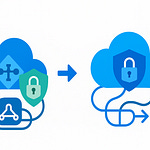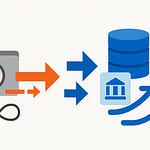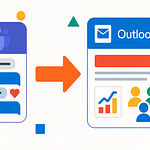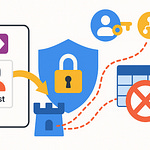You rolled out Microsoft Information Protection, but here’s the uncomfortable truth: too many rollouts only look secure on paper. By the end of this Podcast, you’ll have five quick checks to know whether your MIP rollout will fail or fly.
The labels might exist, the policies might be set—but without strategy, training, and realistic expectations, MIP is just window dressing. The real failure points usually fall into five traps: no clear purpose, over-engineering, people resistance, weak pilots, and terrible training. Seen any of those in your org? Drop it in the comments.
So let’s start with the first—and possibly the most common—tripwire.
When MIP Is Just Labels with No Purpose
Ever seen a rollout where the labels look clean in the admin center—color coded, neatly named—but ask someone outside IT why they exist and you get silence? That’s the classic sign of a Microsoft Information Protection project gone off track. Labels are meant to reduce real business risk, not to decorate documents. Without purpose behind them, all you’ve done is set up a digital filing cabinet no one knows how to use.
This happens when creating labels is treated as the finish line instead of the starting point. It feels productive to crank out a list of names, tweak the colors, and show a compliance officer that “something exists.” But without a defined goal, the exercise is hollow. Think of it like printing parking passes before you’ve figured out whether there’s a parking lot at all. You’ve built something visible but useless.
The right starting point is always risk. Are you trying to prevent accidental sharing of internal data? To protect intellectual property? To stay compliant with a privacy regulation? If those questions stay unanswered, the labels lose their meaning. IT may feel the job is done, but employees see no reason to apply labels that don’t connect to their actual work.
I once saw a project team spend weeks designing more than twenty highly specific labels: “Confidential – Project Alpha,” “Confidential – Project Beta,” “Confidential – M&A Drafts,” and so on. They even added explanatory tooltips. On the surface, it looked thoughtful. But when asked what single business risk they were trying to solve, the team had no answer. End users, faced with twenty possible choices, defaulted to the first one they saw or ignored the process completely. The structure collapsed not because the tech was broken, but because there was no vision guiding it. Here’s the test you can run right now: before you roll out labels, answer in one sentence—what specific business risk will these labels reduce? If you can’t write that sentence clearly, you’re already off course.
Many practitioners report exactly this problem: initiatives that launch without a written outcome or clear risk alignment. By ignoring that piece, the entire rollout becomes a symbolic exercise. It may give the appearance of progress, but it won’t deliver meaningful protection.
The contrast is clear when you look at organizations that do it well. They start simple. They ask, “What’s the worst thing that could leak?” They involve compliance officers and privacy leads early. Then they design a small, focused set of labels directly tied to concrete risks: “Personal Data,” “Internal Only,” “Confidential,” maybe a public label if it matters. That’s it. They don’t waste cycles debating shades of icon colors because the business value is already obvious. And when an employee asks, “Why should I label this?” there’s a straight answer: because labeling here keeps us compliant, prevents oversharing, or secures intellectual property.
If you want a practical guideline, use this: start with a handful of core labels tied to your biggest risks. Privacy, IP protection, internal-only information, and public content are usually a strong anchor set. Don’t scale out further until you see usage patterns that prove employees understand and apply them consistently. Expanding too soon only creates noise and confusion.
So, define the risk. Involve compliance owners. Keep scope limited to what matters most. Tie every label to a clear, business-driven outcome. Skip that, and MIP becomes a sticker book. And once users figure out the stickers don’t protect anything meaningful, they’ll stop playing the game.
This is why many projects end up broken before the first training session ever happens. Technical setup can be flawless, but without a vision and a clear “why,” the rollout has no staying power. Everything else builds on this foundation. Strategy gives meaning to the user story, dictates the label taxonomy, and sets the tone for pilots and training.
But even when that purpose is locked in, there’s another trap waiting. Too many teams get distracted by the tech knobs, toggles, and dropdowns, believing if they configure every feature, success will follow. That mindset, as we’ll see next, can derail even the most promising rollout.
The Technical Rabbit Hole
When IT teams start treating Microsoft Information Protection as an engineering challenge instead of a tool for everyday users, they fall into what I call the technical rabbit hole. Instead of focusing on how people will actually protect files, attention shifts to toggles, nested policies, and seeing how deeply MIP can be wired into every backend system. It looks impressive in the admin console, but that complexity grows faster than anyone’s ability to use or manage it.
Here’s the classic pattern: admins open the compliance portal, see a long list of configuration options, and assume the right move is to enable as much as possible. Suddenly there are dozens of sub-labels, encryption settings that vary by department, and integrations turned on for every service in sight. At that point, you’ve got a technically pristine setup, but it’s built for administrators—not for someone trying to send a simple spreadsheet.
The more detailed the setup, the harder it is for employees to make basic choices. Picture asking a busy sales rep to decide between “Confidential – Client Draft External” versus “Confidential – Client Final External.” That level of granularity doesn’t just feel pedantic, it slows people down. You may think you’ve built a secure taxonomy, but what most users see is bureaucracy. And when people don’t understand which label to use, hesitation turns into avoidance, and avoidance turns into workarounds.
An organization I worked with designed a twelve-level label hierarchy to cover every department and project. On paper, it looked brilliant. In practice, employees spent minutes clicking through submenus just to share a file internally. One wrong choice meant they were locked out of their own content. Support requests exploded, and desperate teams stripped labels off documents to get their jobs done. The setup ticked every technical box, but it created more risk than it eliminated.
Many experienced practitioners recommend starting simple—fewer labels, broader categories, and only expanding once adoption is proven. That principle exists because over-engineering is one of the most common failure points. A good rule of thumb is this: if it takes more than three clicks, or if users have to dig through a submenu to label a file, your taxonomy is too complex. That’s an immediate signal the system isn’t designed for real-world use.
Think of it like building a six-lane highway in a small town where most people walk or bike. Impressive? Sure. Useful? Not at all. In MIP terms, complexity feels powerful during design, but it creates a maintenance burden without solving the immediate problem. A smaller, unobtrusive setup is far more effective at meeting the real demand today—and it can always expand later if your needs grow.
So how simple is simple enough? Start with the categories that address your largest risks: things like “Internal Only,” “Personal Data,” “Confidential,” and maybe “Public.” That’s often all you need to launch. Every additional label or setting must be tied directly to a business requirement, not just the presence of another toggle in the portal. If nobody outside IT can explain why a label exists, it probably shouldn’t.
When projects keep complexity in check, the benefits are obvious. Rollouts finish faster, employees adopt the system with less resistance, and support costs stay low. Once those fundamentals stick, it’s far easier to extend into advanced features without derailing the rollout. The truth is, perfect technical design isn’t the prize. The outcome is protecting sensitive data in a way people can actually manage.
But keeping the tech simple isn’t the final hurdle. A streamlined system can still crash and burn if the people expected to use it don’t see the value or feel it gets in their way. Even when the console is built right, adoption depends on behavior—and that’s where the real resistance starts to show up.
The Human Resistance Factor
The biggest stumbling block for most Microsoft Information Protection rollouts isn’t technology at all—it’s people. You can design the cleanest labeling structure, align it with compliance, and fine-tune every policy in the console. But if end users see the system as frustrating or irrelevant, the whole effort unravels. Adoption is where success is measured, and without it, every technical achievement fades into the background.
For most employees, applying labels or responding to policy prompts doesn’t feel like progress. It feels like friction. Outlook used to send attachments instantly, but now a warning interrupts. A quick file share in Teams suddenly triggers alerts. IT celebrates these as working controls. Employees experience them as barriers, which creates the impression the system is built to satisfy IT rather than support everyday work.
That frustration shapes behavior in subtle but damaging ways. Instead of carefully labeling content, people hit the default option every time. When controls block sending a file, they look for shortcuts or plead with IT to “just remove the block.” These behaviors don’t show up in a dashboard—they surface in the erosion of trust and the growth of workarounds.
I worked with one company that rolled out strict outbound email scanning. Files flagged as sensitive were automatically blocked from sending. The setup was technically flawless—it prevented leaks by design. But because leadership didn’t prepare users, chaos followed. Overnight, departments couldn’t send reports, design teams couldn’t share drafts, and vendor projects went on hold. Support teams were swamped with tickets, and executives demanded exceptions within days. The technology delivered its promise, but the communication failed. Instead of building confidence, security became seen as the obstacle to getting work done.
This scenario isn’t unusual. Research and practitioner experience often point to poor change management as one of the top reasons enterprise IT projects fall apart, even when the software itself functions perfectly. The real obstacle is employees not being informed, engaged, or convinced. Without preparation, even strong technical designs collapse when met with everyday pressure.
The problem is that security’s value is invisible to most staff. The benefit is avoiding breaches, fines, or reputational damage—abstract risks compared to the immediate pain of being unable to share a file. Without a clear story that translates those benefits into something tangible, like protecting customer trust or safeguarding client IP, labeling feels arbitrary. People stop seeing themselves as part of the protection effort.
One way to make the benefit real is through communication that connects directly to the work at hand. Leaders and managers need simple, repeatable messages that emphasize why labeling matters. For example: “This helps us avoid costly regulatory penalties.” Or, “This keeps client personal data protected so trust stays intact.” Or even, “This stops the wrong people from seeing our designs before launch.” Each of those statements ties the inconvenience of labeling to a consequence the employee actually cares about.
If you want a quick test of your rollout’s readiness, ask yourself this: can an immediate manager explain why a label matters in fewer than ten words? If the answer is no, that disconnect will show up quickly among frontline staff.
It’s helpful to reframe policies by how they feel to employees. Do they feel empowered by the controls, or trapped by them? If people feel locked out of what they need to do their jobs, they’ll find ways around your system. If they feel the guardrails help them avoid mistakes or keep client data safe, they’ll cooperate. The technical design stays the same—but trust in the purpose makes adoption possible.
For lasting success, labeling has to feel less like punishment and more like protection. Seeing the “why” matters as much as configuring the “how.” If that connection is missing, the project can appear strong during testing yet collapse the moment employees face real scenarios. True adoption depends not only on features but on whether people believe in the value behind them.
Which leads to a critical question: how do you know if your system will earn that buy-in once it leaves the lab? That’s where the next stage becomes revealing—the way you run your pilot can either expose resistance early or mask it until it’s too late.
The Pilot That Actually Predicts Success
Most pilots start with the wrong question: does the software run without errors? That’s fine for system testing, but it doesn’t predict whether employees will actually use it when real deadlines hit. The better test is this—does MIP hold up in the messy, high-pressure reality of day-to-day work, where nobody has time for extra clicks or confusing choices?
Too often, pilots stay trapped in IT. A few admins or technically friendly staff run checklists to confirm label syncing in Outlook, encryption policies in SharePoint, and inheritance in Teams. Those checks prove the plumbing works, but they say nothing about adoption. Regular employees aren’t running tests with insider knowledge—they’re trying to get their jobs done. Confusion, hesitation, or frustration doesn’t show up on IT’s checklist, but those are the very things that determine rollout success.
This is why narrow pilots fail to reveal the real risks. If labels don’t make sense in plain language, if two options look identical from an employee’s perspective, or if prompts arrive so often that people just click randomly to move forward, the project is already on shaky ground. An IT-only pilot will never show you that, because testers know the intent. Business users don’t, and that gap is where failures emerge.
I’ve seen teams pat themselves on the back after flawless internal pilots, only to collapse when the wider rollout started. One company validated every configuration, ran encryption successfully, and confirmed email flowed without disruption. Yet once employees outside IT logged in, almost no documents were labeled. The wording wasn’t clear, so people ignored it. Nothing broke technically, but adoption failed instantly, sending the team back to redesign the taxonomy.
That’s why many practitioner guides encourage staged adoption with real users. The goal isn’t adding more technical checks—it’s involving business staff at different levels of comfort. They’ll show you if the system fits their workflow, which is what really matters. Failing small with a mixed pilot group is far safer than failing big when you launch to thousands.
Here’s a simpler way to think about it: running a pilot only in IT is like test-driving a car in an empty lot. You learn the wheel turns and the brakes work. What you don’t learn is how it handles rush-hour traffic. A stronger approach is to test under real conditions—put actual non-IT users under real deadlines. For example, ask finance to close a month-end report, or have marketing send a customer proposal while labeling rules are live. That kind of pressure test reveals friction that IT alone can’t simulate.
So what should you measure in a pilot? Not just whether buttons work, but whether adoption holds up during real tasks. Three practical metrics can make this visible: the percentage of correctly applied labels, the number of support tickets per 100 users, and the amount of time lost to blocked workflows. If people mislabel frequently, if helpdesks flood with calls, or if important work stalls, the pilot isn’t ready—no matter how clean the back-end looks.
A practical operational checklist should guide the pass-or-fail decision. Ask: do at least 80% of users apply the correct label when completing live tasks? Are support tickets stable or trending down across the pilot group? Do business workflows like reporting, collaboration, and client emails complete without unplanned blocks? If those three questions can’t be answered with confidence, the system isn’t ready for wider rollout.
Think of a pilot less as testing the engine and more as testing the driver. The goal isn’t to prove the technology works—it’s to prove employees can use it without friction. A pilot that clears these hurdles predicts adoption more accurately than any amount of technical fine-tuning. If it fails, that’s valuable information you gain cheaply and early, before trust is lost and rework becomes expensive.
Strong pilots, then, bridge the gap between IT design and business reality. They validate not just functionality, but usability under actual pressure. And they surface whether labels feel like support or like obstacles in the flow of work.
But even with the right pilot design, there’s another challenge waiting. Introducing a tool is one thing—making its lessons stick is another. And that’s where the next stage can make or break everything: training that actually lasts.
Training That Sticks
Almost every MIP rollout includes training, but most of it fades fast. The typical recipe looks familiar: a clean PDF guide, a one-hour webinar, maybe a quick Teams recording. On paper that checks the “training complete” box. In reality, users close the deck, return to their workload, and the new rules slip out of memory before they ever become habits.
The real problem isn’t bad design; many of those materials look professional. It’s that behavior doesn’t change just because people saw instructions once. Under the pressure of deadlines, that remembered PowerPoint isn’t there. So choices inside Outlook or Teams default to whatever feels fastest—and speed usually beats caution. That’s when you see shortcuts: files sent with the wrong label, or employees choosing “Public” every time just to avoid prompts. The training moment passed, but habits never formed.
Memory fades quickly without reinforcement, and information security decisions are not occasional—they’re daily and repetitive. A one-time dump of information outside the flow of work doesn’t survive. If training doesn’t show up inside the same environment where people act, it won’t stick. Stop expecting one slide deck to change behavior. Design in-work reminders instead.
A stronger model combines three approaches: microlearning, contextual nudges, and manager reinforcement. Microlearning means breaking down training into fast, digestible pieces people can actually finish, like a three‑minute clip on how to apply the right label to a client proposal. Contextual nudges show up where the action happens, such as a short in‑app reminder the first time someone shares a sensitive file externally. Manager reinforcement ties it together through quick discussions in existing team meetings—five minutes spent reviewing a real example from last week, not a 50‑slide deck. Each of these is small, but together they create a feedback loop that reshapes behavior inside the workflow, not outside of it.
What does this look like in practice? Picture an employee mislabeling a contract. Instead of IT escalating a ticket later, the system provides a short, on‑screen explanation right then: “Use ‘Confidential – Client Data’ for contracts. This ensures proper protection.” If it happens again, their manager spends two minutes in a team huddle walking through why it matters. Next week, that same employee sees a 90‑second video refresher linked in Teams during downtime. None of it is heavy; all of it is timely. Over time, those subtle touchpoints turn labeling into a reflex rather than a guessing game.
Training that sticks is also measurable. You don’t need abstract surveys—you need operational signals that show behaviors are changing. Two metrics work well: the repeat correct‑labeling rate and the reduction in quick‑fix or “help me bypass this block” tickets over 30 to 90 days. If more employees apply the right label on the first try, and if fewer support tickets come through for routine issues, that’s progress you can trust. These metrics don’t live in theory—they tell you if reinforcement is landing.
Cadence matters too. Practical cadences we’ve seen work often follow a rhythm: a focused launch burst of short, hands‑on lessons; weekly micro‑tips during the first month; then monthly short refreshers woven into routine communications. This keeps the message active without overwhelming people. The goal isn’t to overload staff with training—it’s to keep the practice visible just enough that it becomes habit. Think of it more like brushing teeth than taking an annual exam: lots of small touches sustain the behavior better than one grand event.
The lesson is clear: you don’t win adoption with a single campaign. You win it by embedding learning into the workflow, nudging at the right moment, and reinforcing just enough to make the behavior natural. Every MIP project that forgets this ends up back in the same place—polished policies, low adoption, and frustrated staff. The ones that remember see stable labeling habits, smaller support queues, and a rollout that delivers protection without constant firefighting.
That puts us in position to step back and look at the big picture. When rollouts break, it’s rarely because the technology itself failed—it’s usually because something else along the line was missed.
Conclusion
A successful rollout comes down to avoiding five tripwires: no clear purpose, technical over-engineering, people resistance, poor pilots, and weak training. Miss any one of them, and adoption fades even if the platform is configured perfectly.
Here’s your quick check before going live: Do your labels tie to a clear business risk? Is the design simple enough for users to choose correctly? Have you prepared employees so resistance doesn’t turn into workarounds? Did your pilot measure real behavior under pressure? And will training reinforce habits over time?
Drop a comment on which tripwire you’ve seen most, and subscribe for more Microsoft 365 rollout guidance. Align people, process, and tech—then MIP protects what it should.











